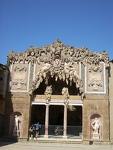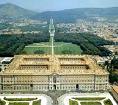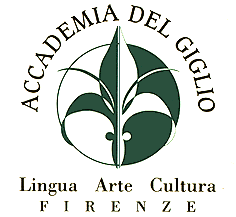Continuiamo con la nostra brevissima sintesi di storia degli stili architettonici in Italia. La prima parte la trovate qui.
 Stile manierista (seconda metà del XVI secolo). Il termine viene da maniera, cioè alla “maniera di”, copiare ma anche modificare l’equilibrio e l’armonia dell’architettura classica fino trasformarla o deformarla. Esempi: la grotta grande di Bernardo Buontalenti nel Girdino di Boboli, la corte di Palazzo Pitti di Niccolò Ammannati, gli Uffizi di Giorgio Vasari, il Giardino Orsini a Bomarzo
Stile manierista (seconda metà del XVI secolo). Il termine viene da maniera, cioè alla “maniera di”, copiare ma anche modificare l’equilibrio e l’armonia dell’architettura classica fino trasformarla o deformarla. Esempi: la grotta grande di Bernardo Buontalenti nel Girdino di Boboli, la corte di Palazzo Pitti di Niccolò Ammannati, gli Uffizi di Giorgio Vasari, il Giardino Orsini a Bomarzo
- Stile barocco (XVII e XVIII secolo). L’arte barocca prosegue l’arte manierista, ma vuole soprattutto impressionare con grandi decorazioni, con soluzioni spaziali spettacolari e/o classiciste ma anche con effetti di illusione ottica; si usano gli stucchi e affreschi grandiosi. Sono in stile Barocco la piazza di San Pietro in Vaticano, la Fontana dei quattro fiumi, entrambe di Gian Lorenzo Bernini. Roma ha molti altri palazzi e chiese barocche. Lecce e Noto sono città barocche.
 Stile rococò (secolo XVIII). Si chiama anche tardo barocco, ma è più “leggero” del barocco, elegante e sfarzoso e con ondulazioni ramificate in riccioli. A Torino troviamo la basilica di Superga e la Palazzina di Stupinigi di Filippo Juvarra. Poi tra il barocco e il rococò possiamo ammirare la Reggia di Caserta di Luigi Vanvitelli, e tra il barocco e il classicismo la Fontana di Trevi
Stile rococò (secolo XVIII). Si chiama anche tardo barocco, ma è più “leggero” del barocco, elegante e sfarzoso e con ondulazioni ramificate in riccioli. A Torino troviamo la basilica di Superga e la Palazzina di Stupinigi di Filippo Juvarra. Poi tra il barocco e il rococò possiamo ammirare la Reggia di Caserta di Luigi Vanvitelli, e tra il barocco e il classicismo la Fontana di Trevi
- stile neoclassico (tra settecento e ottocento). Come si può capire dal nome ha come modello lo stile degli antichi romani e degli antichi greci. Il teatro della Scala di Milano è un esempio di architettura neoclassica.
 Stile liberty o Art Nouveau (fine ottocento – inizi novecento). Stile moderno, industriale ma fantasioso, di solito molto floreale, fa uso di nuovi materiali come il metallo e il vetro. Per lo stile liberty a Firenze cliccate qui
Stile liberty o Art Nouveau (fine ottocento – inizi novecento). Stile moderno, industriale ma fantasioso, di solito molto floreale, fa uso di nuovi materiali come il metallo e il vetro. Per lo stile liberty a Firenze cliccate qui
- Stile ventennio (o fascista). Imponente, grandioso, cerca di conciliare forme moderne e forme classiche, celebrando così la grandezza del regime di Mussolini. La Stazione di Roma e di Firenze sono in stile fascista, come anche il quartiere dell’Eur.
Dopo la seconda guerra mondiale risulta difficile parlare di stili. Dal 1945 a oggi ci sono state tendenze e architetti che hanno fatto tendenza, il più conosciuto da tutti è forse Renzo Piano.
Articoli correlati
Italiano con la storia dell’arte:
– Bartolomeo Ammannati
– Le opere di Andrea del Sarto e il Chiostro dello Scalzo.
– Baccio Bandinelli
– La chiesa di Ognissanti e il Crocifisso di Giotto.
Accademia del Giglio, lingua italiana, arte e cultura a Firenze.
All’Accademia del Giglio è possibile frequentare corsi di storia dell’arte, workshop intensivi di tecniche pittoriche classiche e corsi di lingua italiana per stranieri a Firenze.
Seguiteci su Facebook, Twitter, LinkedIn, Pinterest e Foursquare.







[…] stili architettonici: prima e seconda […]
Mannerist Style (2nd half of the 16th century). The terminology comes from “manner,” for instance “in the manner of”, which copies but also changes the equilibrium and harmony of classical architecture and which transforms or deforms. Examples: the great cave of Bernardo Buontalenti at the Boboli Gardens, the court of the Pitti Palace by Niccolo Ammannati, the Uffizi of Giorgio Vasari, the Orsini Gardens of Bomarzo.
Baroque Style (17th and 18th centuries). Baroque art developed out of Mannerism, but the desire was above all to impress with grand decoration, with uses of space that are spectacular and/or classical in form but also with the use of effective optical illusions; they utilized grandiose stucco and frescos. The piazza of Saint Peter at the Vatican and the Fountain of the Four Rivers by Gian Lorenzo Bernini are in the Baroque Style. Rome has many other Baroque palaces and churches. Lecce and Noto are Baroque cities.
Rococo Style (18th century). This is also called Late Baroque, but it is more “accessible” than Baroque, elegant and splendid and with curling undulations. In Torino there can be found the basilica of Superga and the Palace of the Stupingi by Filippo Juvarra. Then, between the Baroque and the Rococo, we are able to admire the Reggia of Caserta of Luigi Vanvitelli, and between the Baroque and the Classical the Fountain of Trevi.
Neoclassic Style (between 17th and 18th centuries). In this we can see the impact of the model or style of the ancient Romans and Greeks. The theater of la Scala in Milan is an example of Neoclassical architecture.
Liberty style or Art Nouveau (end of the 18th to the beginning of the 19th centuries). A modern style, industrial but fantastic, and on the whole more floral, using new materials such as metal and glass. For the Liberty style in Florence, click here.
20th century (or Fascist) style. All-powerful and grand, this was constructed around forms both modern and classical which celebrated the grand regime of Mussolini. The stations of Rome and Florence are in Fascist style, as is also the EUR quarter.
The end of World War II resulted in difficult discussions about style. From 1945 to today there have many architects who have this tendency, the most known of whom is perhaps Renzo Piano.
[…] Post translated by Andrew and Clélia. The version in Italian is here. […]